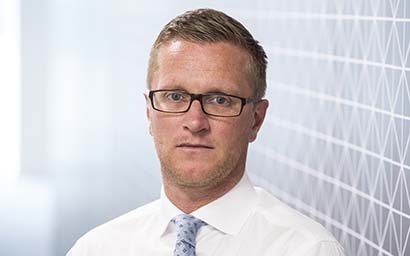Asset managers have until February 2022 to implement the Settlement Discipline Regime and the process will need front-to-back-office input and involve custodian banks, says Matt Johnson, of the Depository Trust & Clearing Corporation.
At a recent CSDR Forum that we hosted with a number of market participants, including one sell-side and two buy-side firms, one message from the participants was loud and clear: while the Settlement Discipline Regime (SDR) is requiring firms to spend resources on automating post-trade processes, the advantages of a more efficient system will ultimately benefit all market participants.
To advance in this area, all forum participants agreed that there are some essential steps for firms to take in order to optimise their post-trade processes in advance of SDR implementation, in February 2022.
Buy-side forum participants unanimously agreed that the initial step that firms should take for preparation is to estimate the size of the impact in-scope firms are going to face when SDR comes into effect. According to one large buy-side firm, projection is critical for preparation as market participants need to be able to predict now what the volume of their settlement fails and buy-ins would be based on current SDR rules. Further, for this to be a useful exercise, the analysis needs to include not only the middle and back office, but the front office too, given its potential involvement in the buy-in process.
Only once this process has taken place will firms fully understand the extent of the changes or updates required to optimise processes for smooth SDR implementation.
The crucial role of custodians in being able to provide access to settlement data which enables back-testing of settlement efficiency was also cited by buy-side forum participants as being critical to predicting the potential impact of SDR. It was agreed more generally that the range of SDR-related services that custodians will be able to provide buy-side firms will be crucial in preparing for SDR. One buy-side firm suggested that the value-added services that custodians can provide to support firms with their SDR needs will become a key competitive differentiator.
Further, buy-side forum participants agreed that efficient pre-matching will be a critical part of ensuring timely settlement. This was supported by the sell-side firm participating in the forum, which stated that 70% of firms’ efforts should be spent on getting the pre-matching process streamlined. This would entail agreeing on the economic details of a trade at the stage of trade affirmation.
Errors and penalties
To clarify, if there are discrepancies in trade confirmation details between market participants—because manual processing is extremely error prone—it could delay the settlement of the trade, which will then incur a penalty. As a result, firms should definitively agree on the terms of the trade in an automated and standardised fashion before the trade flows further downstream for settlement. Buy-side participants agreed that automated exception management solutions – whereby a problem trade is highlighted as early as possible for it to be rectified quickly – will be essential in achieving timely settlement.
Another area of consensus amongst buy-side forum participants was that one of the most crucial parts of efficient pre-matching is the role of data management such as standing settlement instructions (SSIs). SSIs guarantee that trade settlements, margin and payments are sent to the correct accounts. However, as SSIs change frequently, automation improves that up-to-date and accurate account instructions are sent, which in turn facilitates timely confirmations. For the underlying data, legal entity identifier utilities standardise the data on trading parties, while processing systems with built-in reporting can identify failed settlements in close to real time.
Many larger buy-side firms have been preparing for SDR for well over a year, but other smaller firms may only just be starting to gear up for the regulation and may be challenged with the extent of changes to the post-trade process that need to be made.
The good news for buy-side firms that are starting the process is that by simply switching from manual to automated processes for matching and confirmation, significant improvements in post-trade efficiency can be achieved, which can then lead to timely settlement. Post-trade automation increases efficiency, transparency, and can also improve data management – all of which will contribute to smooth SDR implementation.
*Matt Johnson is a director of ITP product management & industry relations at Depository Trust & Clearing Corporation (DTCC).
© 2021 funds europe





